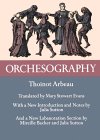Modern translation by Mary Stewart Evans published by Dover Publications Inc. ISBN 0-486-21745-0

100 years ago trying to accurately reconstruct the dances of Queen Elizabeth's court would have been virtually unthinkable, 50 years ago it would have been daunting, today thanks to the efforts of both professional scholars and amateur dancers an interested amateur like myself can, if they are prepared to put in the effort, arrive at what is almost certainly a good approximation.
We are lucky in that a number of high quality sources from the period have survived. I am not going to list every surviving source, but I do want to talk about those that I have drawn most heavily on in preparing the dances for the Elizabeth I project at Hampton Court.
For the simple dances that we are going to teach to visitors there are three sources. The first is a group of documents describing the seasonal revels at the Inns of Court in London in the late sixteenth and early seventeenth centuries. These documents were written by a mixture of students and Inn officials as aide memoirs and contain terse, but adequate descriptions of the dances performed at these revels. The dance related parts of all of these manuscripts have been painstakingly gathered together, transcribed and annotated by D.R. Wilson in an article in Historical Dance Vol.2, No. 5. The second source is a book called Orchesography written by a French clergyman called Jehan Tabourot under the nom de plume Thoinot Arbeau in the 1580s and published posthumously in 1589. This book starts off as a treatise on drumming and rapidly mutates into a very helpful and thoughtfully written manual on how to dance. Orchesography is still in print after over 400 years and an English translation is available in paperback from Dover Books. If you have an interest in Tudor dance and you only plan to buy one book, then buy this one. It is our only source for a number of the dances of the period (including la Volta), and the most detailed source for several other styles. The third source is The English Dancing Master published by John Playford in 1651. This little book gives instructions for over 100 English Country Dances. Some of these were new in Playford's day, but others are clearly much older and by choosing carefully it is possible to find a number that are probably still in a form that would have been familiar to Queen Elizabeth and her court. Playford's dance descriptions are somewhat brief, but they do allow the figures of the dances to be reconstructed with confidence in most cases, although the precise nature of the steps is still the subject of some debate.
Some of the performance dances are also taken from these three sources, but they are also drawn from two further books: one called il Ballarino written by Fabritio Caroso and published in 1581; and another called le Gratie d'Amore by Cesare Negri published in 1602. These two books were republished in facsimile form by Broude Brothers Ltd in the late 1960s and I think that they are both still available. These are large and extremely detailed manuals on how to dance and how to behave at balls. Both are illustrated, and both contain fairly detailed descriptions of the dance steps used and equally detailed descriptions of dances. To put things in perspective The English Dancing Master crams about 100 dances and their music into 104 pages of approximately A5 dimensions. Negri uses nearly 300 pages that are more than twice the size to cover only 50 dances with their music. Despite this Negri and Caroso's manuals still leave some questions unanswered and a very great deal of effort has been expended in the last 50 years trying to work out exactly what they meant.
In preparing the program for Hampton Court I have drawn on the ideas and experience of the teachers whose workshops I have attended over the last 16 years. Of these the two who have probably had the most influence on the way I have decided to interpret and present these dances are Mary Collins and Hazel Dennison.
D.R. Wilson, Dancing in the Inns of Court
Historical Dance Volume 2, Number 5, 1986-87
Articles from Historical Dance
PDF file of article
Thoinot Arbeau, Orchesography
Modern translation by Mary Stewart Evans published by Dover Publications Inc. ISBN 0-486-21745-0

John Playford, The English Dancing Master
Modern reprint by Dance Books Ltd ISBN 0-903102-80-3

Fabritio Caroso, Il Ballerino
Web site containing text of Il Ballerino
US Library of Congress Facsimile images
Cesare Negri, le Gratie d'Amore
US Library of Congress Facsimile images
Copyright Robert Huggett 2004